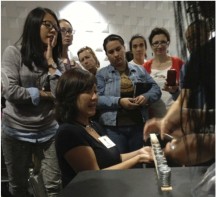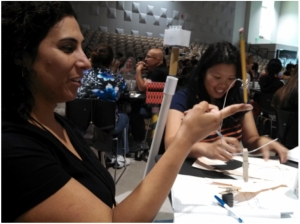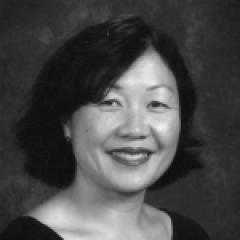InterACT: Teachers Learn by Doing, Too (by Jane Ching Fung)
Today’s ACT guest blog post was written by Jane Ching Fung, an ACT member and teacher from Los Angeles. Jane is a Milken Award winning teacher and has served in various leadership capacities for organizations such as NCTAF, CFTL, and PBS. She is a member of the Teacher Leaders Network, and her writing has also appeared in Education Week Teacher.
I hear and I forget.
I see and I remember.
I do and I understand.
– Confucius
Want teachers to effectively implement and teach Next Generation Science Standards? Offer engaging and meaningful professional development.
It’s the last weeks before school starts. I could be working in my classroom and getting a head start on lesson planning. I could be lounging at the beach or enjoying my last week of freedom. I could be, but instead I jumped at the chance to join colleagues to learn more about the upcoming Next Generation Science Standards. I say upcoming because California has not yet “officially” adopted them, but we will, so why wait?
I wanted to know and learn more about STEM education and how to implement it in a developmentally appropriate way so that my first graders would understand them. When UCLA’s Center X offered Engaging Young Minds2, a 4-day institute centered on the Next Generation Science Standards (NGSS) for $20 during summer, I jumped at the chance; as information about the institute spread via social media, many other teachers signed up as well.
What I expected was to learn more about the NGSS, and maybe to receive or generate some lesson plans.
What I hoped for was to come away with examples of how the NGSS would look in my classroom, some ideas on what I could do with my students, some content knowledge, and time to network with my colleagues.
What happened was so much more.
The canvas teacher bag was nice and having lunch provided each day was a wonderful surprise too, but the BEST reward was what was gained. I started the institute knowing what the NGSS were, but left with a better and deeper understanding of what they are, how to teach them in meaningful ways so that my students would understanding them, and resources to get started right away.
Having attended over 26 years of professional development “opportunities,” I have found there are common factors in the ones that I value most as a teacher and learner.
Collaborative
Opportunities to work collaboratively with others in order to promote deeper understanding and sharing of content knowledge and ideas.
Hands On
Instead of reading and taking about standards and content, provide opportunities to engage with materials so that we can create and imagine ways to best utilized them with our students.
Make Connections
To help learners understand challenging concepts, tie them to something they already know. Introducing a difficult task using a wonderful piece of literature or real world problem, help ties what we are doing to something concrete.
The concept of engineering in the classroom was new to me, but after a few days of being engineers and creating ways to solve simple problems with colleagues helped me realize that what I already do in science can easily be modified to make it more problem based.
Provide Continued Support
Effective professional development provides resources, contacts and continued support. The Engaging Young Minds2 Institute not only included activities for teachers to think and act like engineers and scientists, they provided materials, sample lesson plans, and web links to help teachers continue their growth. Real experts in the field provided content knowledge and a reference to go to for further networking. Follow-up sessions will allow educators a chance to come back together, share, and reflect on teaching and learning from the classroom.
When my school district begins to offer professional development in the NGSS, I hope they recognize just like students, adult learners learn best by doing. The NGSS are not a set of random simple skills students need to master; they are more complex and connected. Educators will need rich learning opportunities to learn what these standards are, and the most effective strategies for teaching our students.
Teachers are craving this kind of professional learning. There was a waitlist for this institute. Let’s hope California steps up to help teachers help students.
This blog post has been shared by permission from the author.
Readers wishing to comment on the content are encouraged to do so via the link to the original post.
Find the original post here:
The views expressed by the blogger are not necessarily those of NEPC.




